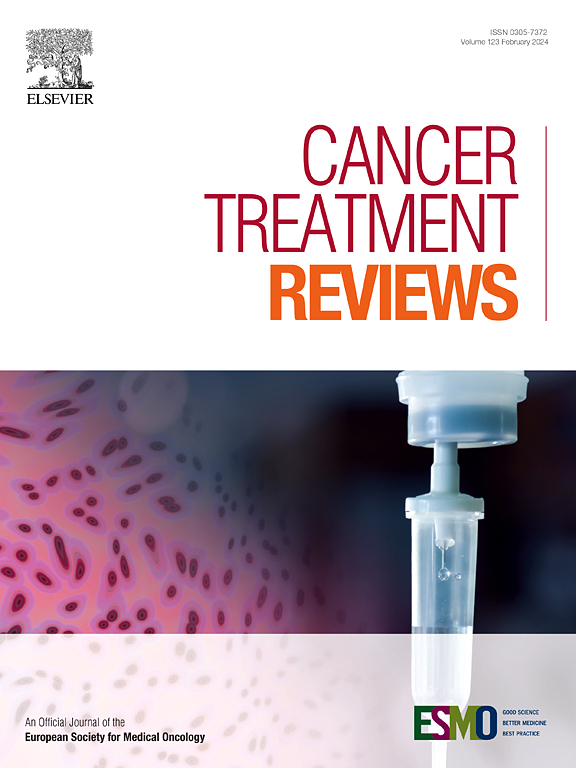头颈部复发性和/或转移性鳞状细胞癌的治疗决策因素和排序
IF 10.5
1区 医学
Q1 ONCOLOGY
引用次数: 0
摘要
复发性和/或转移性头颈部鳞状细胞癌(R/M SCCHN)患者的治疗方案在过去十年中不断发展,并有助于改善患者的生存结果。大多数国家和地区指南通过评估生物标志物程序性细胞死亡配体1 (PD-L1)的表达水平,推荐使用免疫检查点抑制剂(伴或不伴化疗)或基于西妥昔单抗的一线治疗方案。然而,患者和肿瘤特异性因素,包括患者的年龄、合并症、运动状态、肿瘤负荷、动力学和扩散也需要考虑,以优化一线治疗。此外,随着全球新疗法的可用性不断增加,根据患者特征(包括先前接受的治疗)定制随后的二线或二线治疗至关重要。本综述强调了在R/M SCCHN患者的治疗决策中应考虑的因素。它还总结了基于治疗顺序的临床结果的现有证据,并为一线治疗环境和其他治疗环境的患者选择最佳治疗方案提供指导。本文章由计算机程序翻译,如有差异,请以英文原文为准。
Treatment decision-making factors and sequencing in recurrent and/or metastatic squamous cell carcinoma of the head and neck
Treatment options for patients with recurrent and/or metastatic squamous cell carcinoma of the head and neck (R/M SCCHN) have evolved over the past decade and have helped improve survival outcomes for patients. Most national and regional guidelines recommend first-line therapy with an immune checkpoint inhibitor (with or without chemotherapy) or a cetuximab-based regimen, by assessment of expression levels of the biomarker programmed cell death-ligand 1 (PD-L1). However, patient- and tumor-specific factors, including the patient’s age, comorbidities, performance status, and tumor burden, kinetics and spread also need to be considered to optimize treatment in the first line. Additionally, with increasing availability of newer therapies globally, it is crucial to customize the subsequent second- or later-line therapy based on patient characteristics, including the previous therapy received. This review highlights the factors that should be considered for treatment decision-making in patients with R/M SCCHN. It also summarizes the current evidence for clinical outcomes based on treatment sequencing and provides guidance on choosing an optimal treatment regimen for patients in the first-line treatment setting and beyond.
求助全文
通过发布文献求助,成功后即可免费获取论文全文。
去求助
来源期刊

Cancer treatment reviews
医学-肿瘤学
CiteScore
21.40
自引率
0.80%
发文量
109
审稿时长
13 days
期刊介绍:
Cancer Treatment Reviews
Journal Overview:
International journal focused on developments in cancer treatment research
Publishes state-of-the-art, authoritative reviews to keep clinicians and researchers informed
Regular Sections in Each Issue:
Comments on Controversy
Tumor Reviews
Anti-tumor Treatments
New Drugs
Complications of Treatment
General and Supportive Care
Laboratory/Clinic Interface
Submission and Editorial System:
Online submission and editorial system for Cancer Treatment Reviews
 求助内容:
求助内容: 应助结果提醒方式:
应助结果提醒方式:


